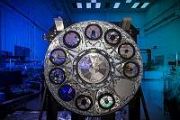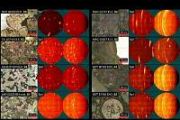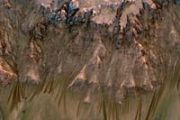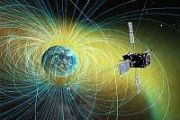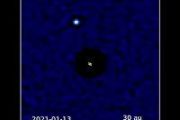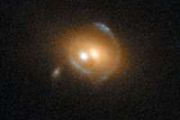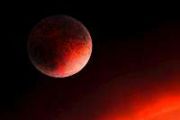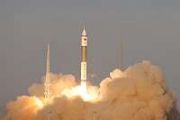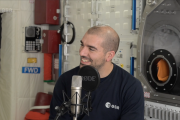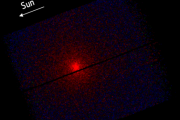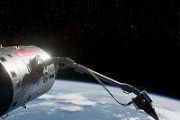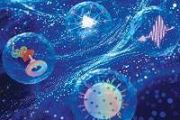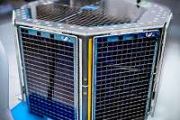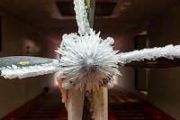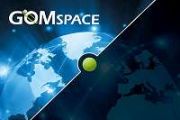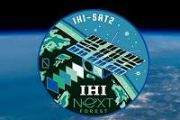
Copernical Team
Private rocket maker sends remote-sensing satellite into orbit
 Galactic Energy, a private rocket maker in Beijing, carried out on Friday the eighth flight mission of its CERES 1 rocket to deploy a remote-sensing satellite into orbit.
The CERES 1 Y8 rocket blasted off at 12:57 pm at the Jiuquan Satellite Launch Center in northwestern China's Gobi Desert and placed the Jilin 1 Wide-View 02A satellite into its preset orbit, the company said in a news rel
Galactic Energy, a private rocket maker in Beijing, carried out on Friday the eighth flight mission of its CERES 1 rocket to deploy a remote-sensing satellite into orbit.
The CERES 1 Y8 rocket blasted off at 12:57 pm at the Jiuquan Satellite Launch Center in northwestern China's Gobi Desert and placed the Jilin 1 Wide-View 02A satellite into its preset orbit, the company said in a news rel New X-ray Detectors to Provide Unprecedented Vision of the Invisible Universe
 Very detailed information is now available from ultraviolet, optical, and submillimeter observations of the stellar, dust, and cold gas content of galaxies, and yet there is a dearth of understanding about the mechanisms that formed these galaxies. To truly understand how galaxies form, X-ray observations from high energy resolution imaging spectrometers are needed to see the cores of the galaxi
Very detailed information is now available from ultraviolet, optical, and submillimeter observations of the stellar, dust, and cold gas content of galaxies, and yet there is a dearth of understanding about the mechanisms that formed these galaxies. To truly understand how galaxies form, X-ray observations from high energy resolution imaging spectrometers are needed to see the cores of the galaxi Dead stars cast long shadows: WVU astronomer hunts for the glowing ghosts of supernovas
 A West Virginia University astronomer is searching the Milky Way for debris left behind by supernovas, the violent explosions that occur when massive stars die.
After a supernova explosion, material that was part of the star expands outward, forming a shell or "remnant." According to Loren Anderson, professor at the Eberly College of Arts and Sciences, studying supernova remnants is "essen
A West Virginia University astronomer is searching the Milky Way for debris left behind by supernovas, the violent explosions that occur when massive stars die.
After a supernova explosion, material that was part of the star expands outward, forming a shell or "remnant." According to Loren Anderson, professor at the Eberly College of Arts and Sciences, studying supernova remnants is "essen Sols 3932-3933: Touch and Go, Go, Go!
 Earth planning date: Monday, August 28, 2023: Curiosity successfully navigated the numerous resistant, dark boulders (once included in the Gediz Vallis ridge deposit and the focus of our recent investigations), 20 degree slopes and broken up bedrock to cover a distance of ~65 m back towards our planned ascent route up Mount Sharp in the weekend plan.
This is one of our longer recent drives
Earth planning date: Monday, August 28, 2023: Curiosity successfully navigated the numerous resistant, dark boulders (once included in the Gediz Vallis ridge deposit and the focus of our recent investigations), 20 degree slopes and broken up bedrock to cover a distance of ~65 m back towards our planned ascent route up Mount Sharp in the weekend plan.
This is one of our longer recent drives PSI study shows evidence of highly mobile lunar regolith
 Swirls are enigmatic albedo (light reflection) patterns on the lunar surface associated with local magnetic anomalies. The processes involved in their formation have been examined and debated since their discovery. The most popular idea is shielding of the surface from solar wind radiation by the associated magnetic anomaly. This explains the swirling pattern, as shielded material would be brigh
Swirls are enigmatic albedo (light reflection) patterns on the lunar surface associated with local magnetic anomalies. The processes involved in their formation have been examined and debated since their discovery. The most popular idea is shielding of the surface from solar wind radiation by the associated magnetic anomaly. This explains the swirling pattern, as shielded material would be brigh Benchmark Space Systems cracks code for viable ASCENT propellant
 Tapped to help U.S. defense agencies deploy safer propellant alternatives to hydrazine, Benchmark Space Systems has announced a two-year, $2.81 million AFRL SPRINT (Space Propulsion Research and Innovation for Neutralizing Satellite Threats) award to further develop and test flight-optimized thrusters running on ASCENT (Advanced Spacecraft Energetic Non-Toxic) fuel.
It is Benchmark's secon
Tapped to help U.S. defense agencies deploy safer propellant alternatives to hydrazine, Benchmark Space Systems has announced a two-year, $2.81 million AFRL SPRINT (Space Propulsion Research and Innovation for Neutralizing Satellite Threats) award to further develop and test flight-optimized thrusters running on ASCENT (Advanced Spacecraft Energetic Non-Toxic) fuel.
It is Benchmark's secon Is a Mach 4 Passenger Jet Possible? NASA, Industry Explore Idea
 Flying from New York City to London up to four times faster than what's currently possible may sound like a far-off dream, but NASA is exploring whether the commercial market could support travel at such speeds. NASA recently investigated the business case for supersonic passenger air travel aboard aircraft that could theoretically travel between Mach 2 and Mach 4 (1,535-3,045 mph at sea level).
Flying from New York City to London up to four times faster than what's currently possible may sound like a far-off dream, but NASA is exploring whether the commercial market could support travel at such speeds. NASA recently investigated the business case for supersonic passenger air travel aboard aircraft that could theoretically travel between Mach 2 and Mach 4 (1,535-3,045 mph at sea level). Producing superior graphene aerogel in space
 Graphene aerogel is a remarkable lightweight material that is both thermally insulating and electrically conductive. This makes it appealing for use in a wide variety of applications-from improved energy storage in batteries to better oil spill cleanup methods to next-generation space suits. A team of researchers from Stanford University and the University of California, Berkeley are leveraging
Graphene aerogel is a remarkable lightweight material that is both thermally insulating and electrically conductive. This makes it appealing for use in a wide variety of applications-from improved energy storage in batteries to better oil spill cleanup methods to next-generation space suits. A team of researchers from Stanford University and the University of California, Berkeley are leveraging NASA Armstrong supports wind study
 Wind affects all aircraft, particularly during takeoff and landing. It's especially critical for new types of transportation. A new NASA flight campaign studying wind aims to gather information to enhance air taxi safety.
Researchers measured wind at altitudes below 2,000 feet using drones, sensors, weather balloons, and other technology during the Advanced Exploration of Reliable Operatio
Wind affects all aircraft, particularly during takeoff and landing. It's especially critical for new types of transportation. A new NASA flight campaign studying wind aims to gather information to enhance air taxi safety.
Researchers measured wind at altitudes below 2,000 feet using drones, sensors, weather balloons, and other technology during the Advanced Exploration of Reliable Operatio Swarm of small transportation vehicles carries 40 tons
 Old production machinery has to be replaced due to changed requirements. However, high weight and limited space in plants often make it very difficult to assemble and disassemble big machines or to reposition them. Frequently, this is done by hand using heavy-duty rollers.
FORMIC Transportsysteme, a spinoff of Karlsruhe Institute of Technology (KIT), has developed a semi-automatic transpor
Old production machinery has to be replaced due to changed requirements. However, high weight and limited space in plants often make it very difficult to assemble and disassemble big machines or to reposition them. Frequently, this is done by hand using heavy-duty rollers.
FORMIC Transportsysteme, a spinoff of Karlsruhe Institute of Technology (KIT), has developed a semi-automatic transpor 






